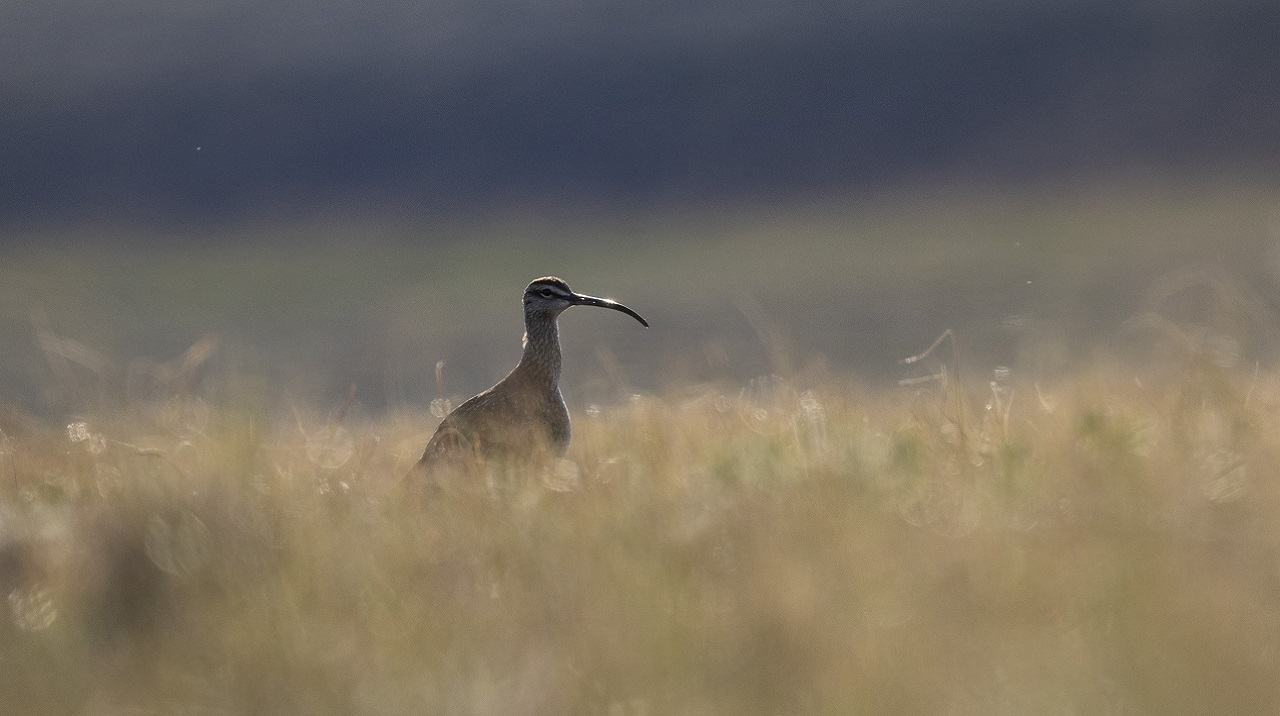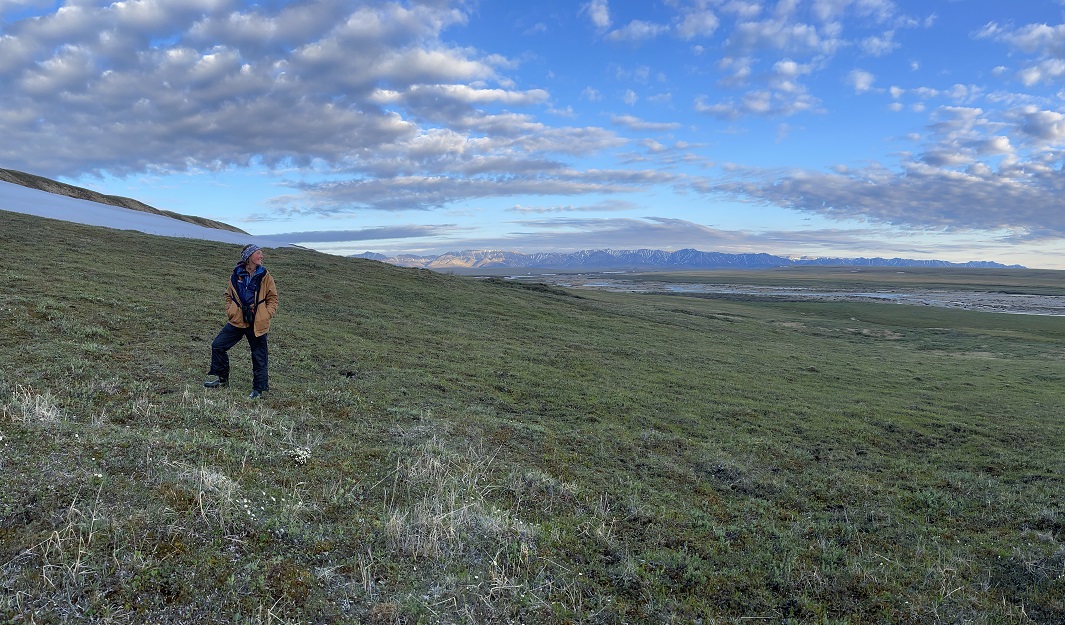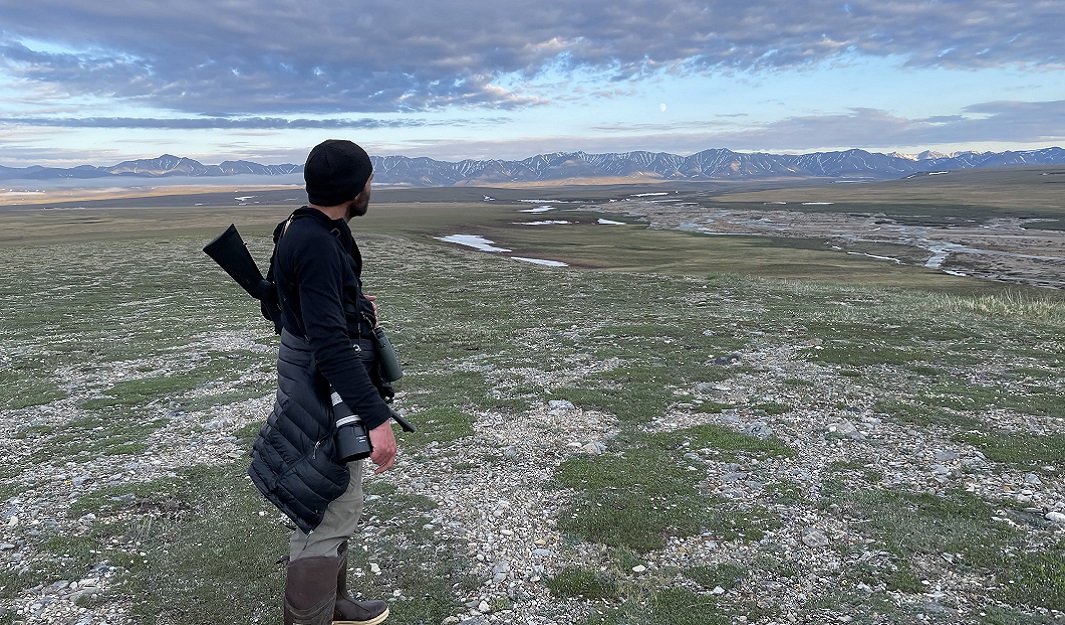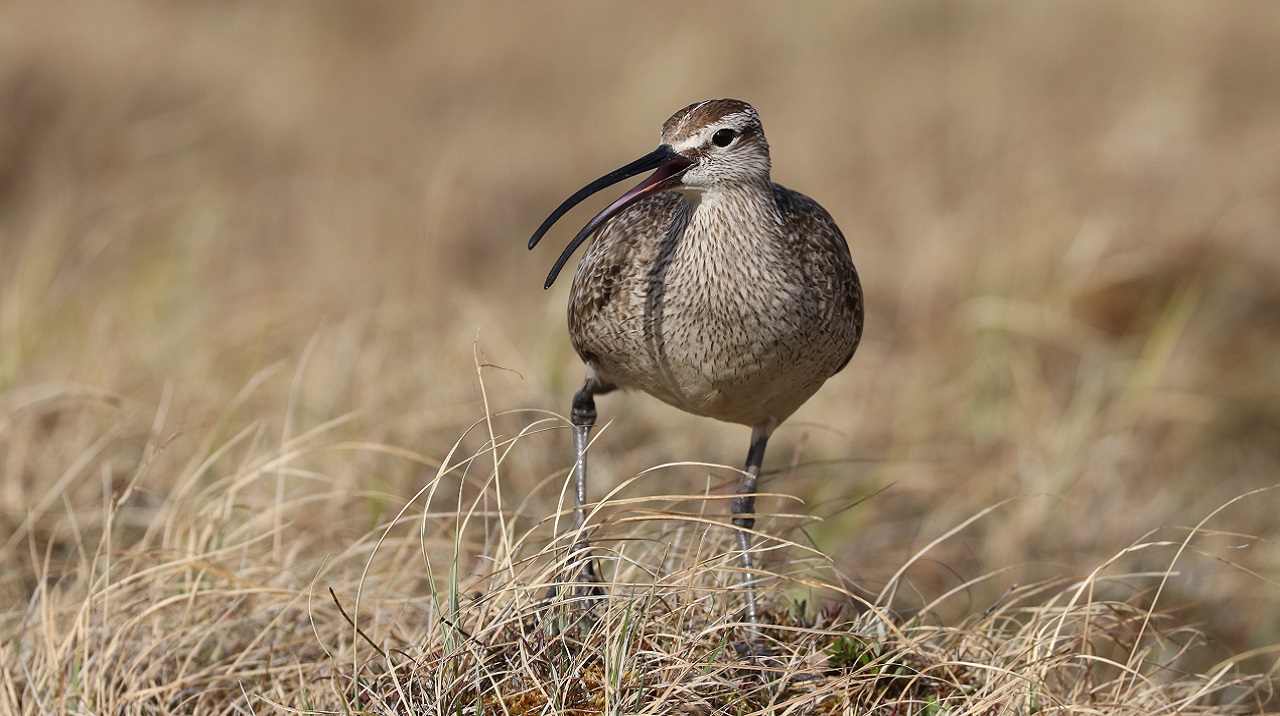Shiloh Schulte, Manomet’s senior shorebird scientist, recently spent four weeks in the Arctic National Wildlife Refuge, continuing several studies delayed by COVID-19. Working closely with the U.S Fish and Wildlife Service, Shiloh deployed GPS tracking tags on Whimbrel, American Golden-Plovers, Pectoral Sandpipers, and other species as part of an ongoing study of local movement patterns and long-distance migration pathways and stopover sites. In addition to the tracking work, Shiloh collaborated to develop methods for remote monitoring of shorebird nests and mentored new USFWS technicians and volunteers.
Shiloh recently shared his experiences on Alaska’s Katakturuk River tagging Whimbrels to study local movement patterns and long-distance migration pathways and stopover sites.
I have been lying flat in the sedge, hiding behind a tundra mound for the last 20 minutes. A cloud of frustrated mosquitos is whining all around but unable to reach me through my bug shirt and headnet. One hundred and fifty meters away, a male Whimbrel is slowly making his way back toward his nest, head up and on high alert. It is the morning of June 23, and it’s our last morning in the Katakturuk River valley in Alaska’s Arctic National Wildlife Refuge. Our trip has already been a huge success, with five Whimbrels tagged with GPS transmitters in the last three days. But, we have one last transmitter to put out, and we really want to catch this bird. Two hundred meters along the slope, I can barely see the tan camouflage of Kirsti Carr’s bug jacket as she also lies flat in the sedge, watching from another angle and ready to radio the moment the Whimbrel gets back on the nest.





 Back to all
Back to all



